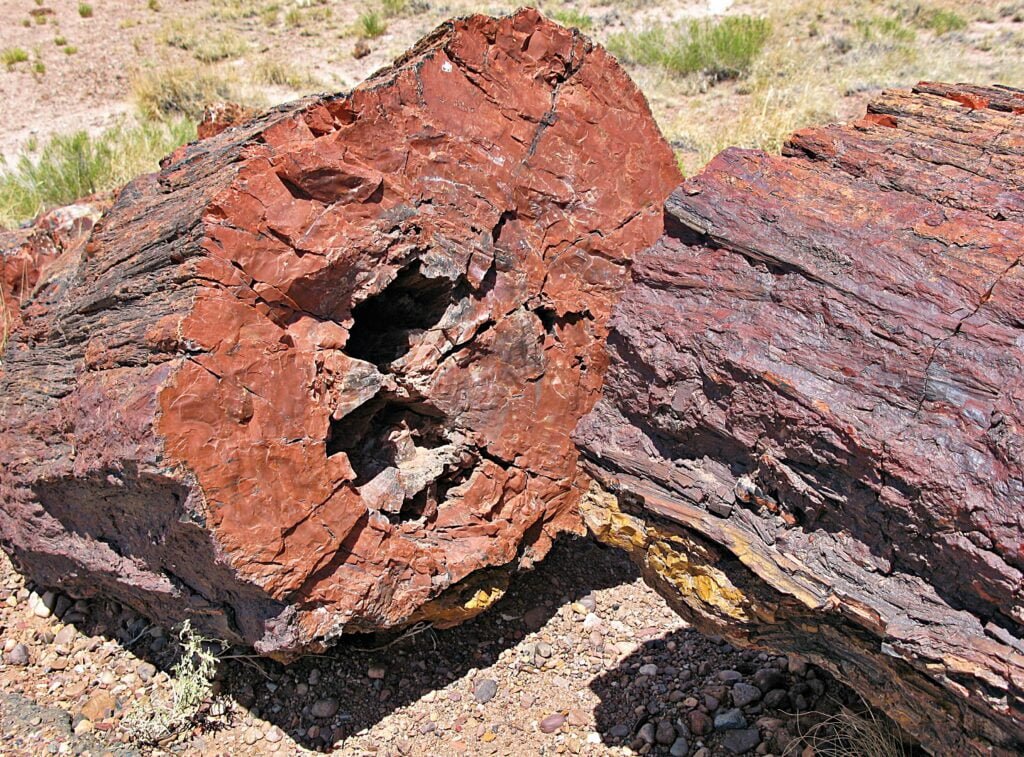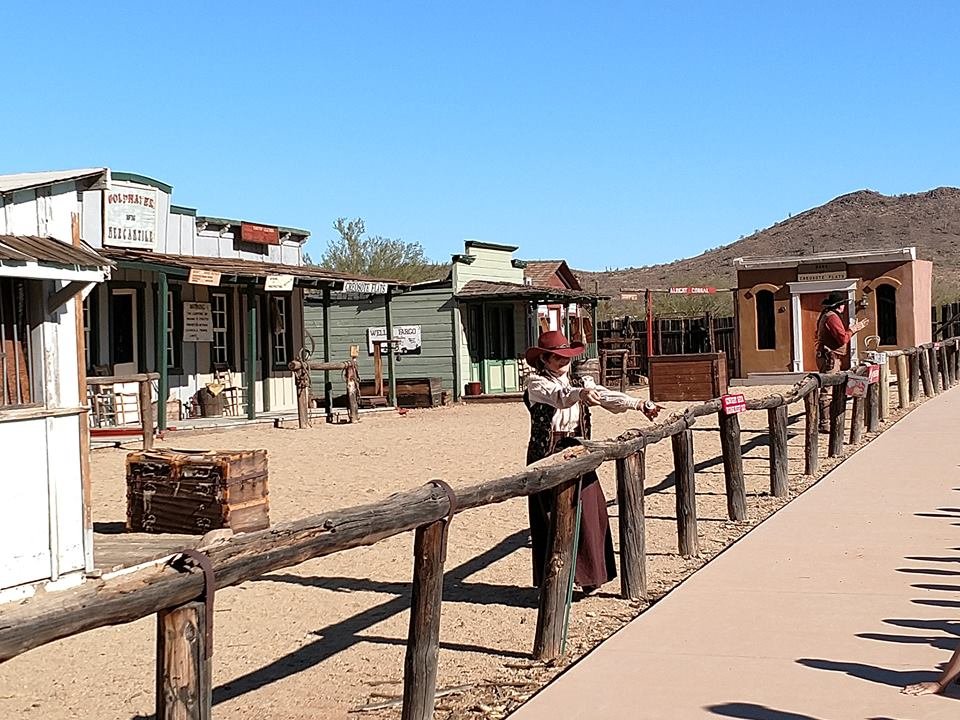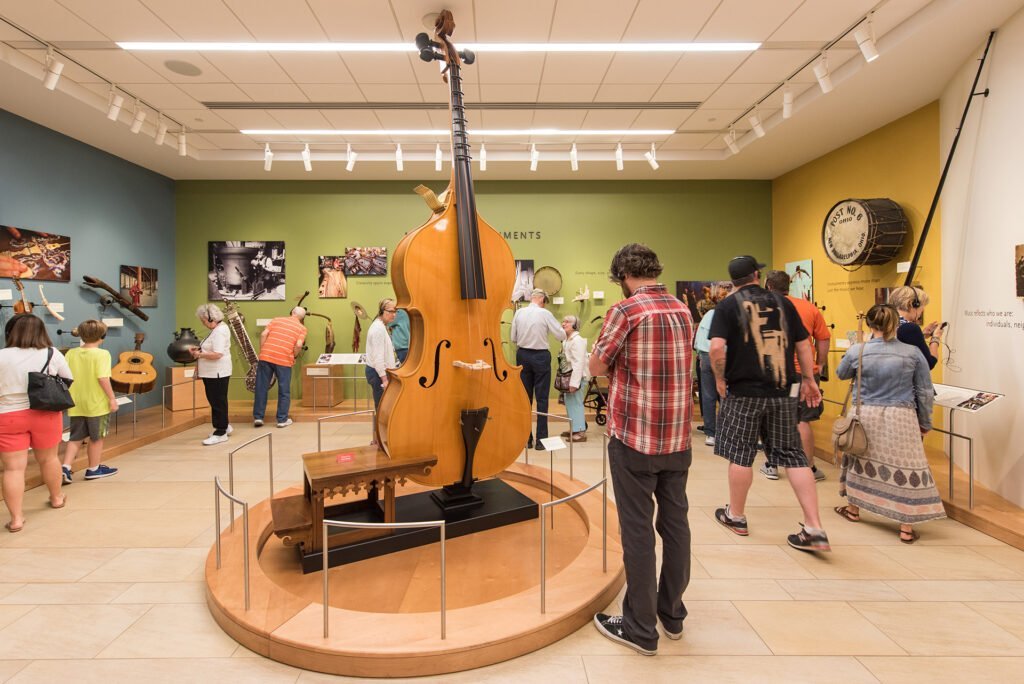“Explore the Ancient Wonders of Petrified Forest National Park with Arizona City Living”

Welcome to Arizona City Living, where we invite you on a captivating journey through the ancient wonders of Petrified Forest National Park. Nestled in the heart of Arizona, this unique national park is a treasure trove of geological marvels, prehistoric fossils, and stunning natural landscapes. Join us as we embark on an exploration of Petrified Forest National Park’s fascinating history, breathtaking vistas, and remarkable petrified wood.
Petrified Forest National Park:
Petrified Forest National Park is a unique and captivating destination in northeastern Arizona. Covering over 230 square miles, it is renowned for its stunning landscape, petrified wood, and rich paleontological history. The park offers visitors a chance to step back in time and explore the remnants of an ancient forest that existed over 200 million years ago.
The main attraction of the park is the petrified wood, which is essentially fossilized ancient trees that have turned into stone over millions of years. These petrified logs are scattered throughout the park and are a testament to the remarkable geological processes that have taken place here. Visitors can witness the beautiful and colorful petrified wood up close, with hues ranging from vibrant reds and oranges to soft blues and purples.
Petrified Forest Fossils:
The Petrified Forest is not just about petrified wood; it’s also a treasure trove of prehistoric fossils. The park boasts an impressive collection of fossils dating back to the Late Triassic Period, around 225 million years ago. These fossils include ancient reptiles, plants, and even early dinosaurs. One of the most famous fossil specimens discovered in the park is the complete skeleton of a Phytosaur, an extinct crocodile-like reptile.
Visitors interested in paleontology can explore the park’s paleontological exhibits and learn about the incredible discoveries made here. Fossil remains provide valuable insights into the ancient ecosystems that once thrived in this region.
Painted Desert Arizona:
Petrified Forest National Park is also known for its stunning and dramatic landscape, often referred to as the “Painted Desert.” This desert is characterized by its vibrant and varied colors, with the sedimentary rocks displaying shades of red, orange, pink, and purple. The colorful layers of rock formations have been sculpted by erosion over millions of years, creating a surreal and visually captivating terrain.
Visitors can explore the Painted Desert through various scenic overlooks and hiking trails within the park. The ever-changing play of light and shadow on the landscape makes it a popular destination for photographers and nature enthusiasts alike.
Petrified Forest Hiking Trails:
For those eager to immerse themselves in the natural beauty of the park, Petrified Forest offers several hiking trails. These trails vary in length and difficulty, catering to both casual strollers and avid hikers. The Blue Mesa Trail, for example, takes hikers through a stunning badland landscape with petrified wood scattered across the trail. The Crystal Forest Trail is another popular choice, offering an easy hike among colorful petrified logs.
The Long Logs and Agate House Trails provide more challenging terrain and opportunities to view larger concentrations of petrified wood. Each trail offers a unique perspective on the park’s geological wonders, fossils, and stunning vistas.
Petrified Wood:
Petrified wood is perhaps the most iconic feature of Petrified Forest National Park. These ancient trees, which lived during the Late Triassic Period, have been preserved in exquisite detail. Over millions of years, the wood’s organic material was replaced by minerals, transforming it into stone. The result is a breathtaking display of petrified logs, some reaching lengths of over 200 feet.
Visitors can encounter petrified wood throughout the park, often in the form of colorful and intricately patterned logs that have eroded from the surrounding badlands. The Jasper Forest is a notable location within the park where numerous petrified logs are clustered together, creating a visually stunning tableau.
Exploring the Petrified Forest offers a unique opportunity to witness the wonders of nature, from the exquisite petrified wood to the colorful Painted Desert, making it a must-visit destination for those fascinated by the Earth’s ancient history and geological marvels.
Petrified Forest Visitor Center:
The Petrified Forest National Park Visitor Center serves as the gateway to this extraordinary natural wonder. Located near the park’s southern entrance, it’s the ideal starting point for visitors eager to explore the park’s fascinating features. The visitor center offers a range of services and resources to enhance your park experience.
Upon arrival, you’ll find friendly and knowledgeable park rangers who can provide you with maps, park information, and guidance on the best trails and sites to visit. The visitor center also features educational exhibits that delve into the park’s geological history, showcasing the processes that led to the formation of petrified wood and the unique landscape of the Painted Desert.
For those interested in the park’s paleontological discoveries, the visitor center offers a glimpse into the rich history of ancient creatures that once roamed this land. There’s also a gift shop where you can find unique souvenirs, books, and items related to the park’s natural and cultural heritage.
Petrified Forest History:
The history of Petrified Forest National Park stretches back millions of years, and it’s a tale woven into the rocks, fossils, and landscapes of the area. The park’s history includes a rich record of prehistoric life, Native American cultures, and early explorers.
One of the most fascinating aspects of the park’s history is its connection to the Late Triassic Period, around 225 million years ago. During this time, the region was home to a diverse range of plants and animals, including early dinosaurs and reptiles. Visitors can explore the remnants of this ancient ecosystem through the park’s well-preserved fossils.
Native American history is another essential part of Petrified Forest’s story. The park lies within the traditional lands of several Native American tribes, including the Navajo Nation. Petroglyphs and artifacts found within the park bear witness to the enduring relationship between Indigenous peoples and the land.
The park’s history also encompasses the adventures of early European and American explorers who ventured into this arid and rugged terrain, leaving behind tales of discovery and wonder. Today, their journeys are celebrated and remembered through interpretive exhibits and historical sites within the park.
Painted Desert Inn:
The Painted Desert Inn is a historic gem nestled within Petrified Forest National Park. Originally constructed in the 1920s, the inn was built to serve as a respite for travelers along Route 66. However, it evolved into much more than a roadside inn; it became a showcase of art, culture, and architectural innovation.
Designed by noted architect Mary Jane Colter, the inn features a unique blend of Pueblo Revival and Art Deco styles. Its adobe walls, colorful murals, and handcrafted furnishings make it a stunning example of Southwestern architecture. The inn’s museum-quality exhibits highlight the history, geology, and Native American cultures of the region.
Visitors to the Painted Desert Inn can explore its historic rooms, dine in its charming café, and immerse themselves in the cultural and artistic legacy of the American Southwest. It’s a testament to the park’s commitment to preserving both natural and cultural heritage.
Petrified Forest Paleontology:
Petrified Forest National Park is renowned for its paleontological treasures. The park’s ancient rocks and fossils offer a window into life during the Late Triassic Period, making it an invaluable site for scientists and enthusiasts alike.
The park’s paleontological history is primarily centered around the remains of prehistoric creatures and plants that once thrived here. Fossilized remains of early dinosaurs, such as the Coelophysis, have been discovered in the park. The Coelophysis Quarry is a particularly significant site, where numerous fossils of this ancient predator have been unearthed.
Beyond dinosaurs, Petrified Forest’s fossil record includes reptiles, amphibians, and a wide variety of plants. The fossils offer insights into the ecological relationships and environmental conditions of this ancient world.
The park’s paleontological significance has led to ongoing research and discoveries, contributing to our understanding of Earth’s history and evolution. Visitors can engage with this history through interpretive exhibits and educational programs offered at the park.
Agate House Petrified Forest:
Agate House is a remarkable archaeological site located within Petrified Forest National Park. This ancestral Puebloan dwelling is a testament to the enduring human presence in the region dating back over 700 years.
The house is constructed from petrified wood and other local materials, showcasing the resourcefulness and architectural skills of the ancestral Puebloan people. Agate House contains over 80 rooms and is one of the best-preserved structures of its kind within the park.
Visitors can access Agate House via the Petrified Forest’s hiking trails, providing a unique opportunity to step back in time and explore the historical and cultural heritage of the region. It offers a glimpse into the lives of the people who once called this place home, highlighting their ingenuity and adaptation to the challenging desert environment. The site is a fascinating addition to the park’s rich tapestry of history and natural wonders.
Petrified Forest Blue Mesa Trail:
One of the most iconic and visually stunning hiking trails in Petrified Forest National Park is the Blue Mesa Trail. This trail offers a unique journey through the park’s geological wonders and ancient history. It’s a must-visit destination for anyone exploring the park.
The Blue Mesa Trail is approximately a one-mile loop that winds its way down into a striking badland landscape. As you descend, you’ll be surrounded by towering blue-gray hills made up of bentonite clay, which contrasts beautifully with the petrified wood scattered throughout the area.
What makes the Blue Mesa Trail truly remarkable is the vibrant array of colors found in the sedimentary layers of the badlands. These layers reveal a long history of changing environments and ancient climates. As you hike, you’ll pass through various shades of blue, purple, gray, and red, each layer representing a different geological era.
The trail also provides excellent opportunities for photography, as the ever-changing play of light and shadow on the badlands creates a dynamic landscape that’s a joy to capture. It’s a fantastic spot for both amateur and professional photographers to test their skills.
The Blue Mesa Trail is more than just a visual feast; it’s an educational experience. Interpretive signs along the trail explain the geological processes that shaped this unique landscape and provide insights into the ancient plants and animals that once inhabited the region.
Exploring this trail is like stepping back in time and witnessing the incredible forces of nature that have shaped the Petrified Forest over millions of years. It’s a testament to the park’s geological and historical significance, making it a top attraction for visitors.
Petrified Forest Tepees:
The Petrified Forest Tepees are a prominent geological feature within the park’s boundaries. These cone-shaped formations are composed of compacted volcanic ash and sedimentary rock layers, creating a unique and visually striking landscape.
The Tepees are named for their resemblance to traditional Native American dwelling structures. Their conical shape and layered appearance make them a captivating sight against the backdrop of the Petrified Forest’s colorful badlands.
These formations are primarily made up of bentonite clay, a type of clay known for its swelling properties when wet. This clay, combined with volcanic ash, was deposited in the region millions of years ago during periods of volcanic activity.
Over time, the forces of erosion and weathering sculpted the ash and clay layers into the Tepee formations we see today. Their distinct shape and vibrant hues are a testament to the complex geological history of the area.
Visitors to the Petrified Forest Tepees can appreciate the striking contrasts between the colorful clay layers and the petrified wood found throughout the park. The Tepees serve as a reminder of the ever-changing natural processes that have shaped the unique landscape of Petrified Forest National Park.
Petrified Forest Newspaper Rock:
Newspaper Rock in Petrified Forest National Park is an archaeological treasure and a testament to the rich history of human presence in the region. It is a site adorned with petroglyphs, ancient rock carvings that offer a glimpse into the beliefs and cultures of the people who inhabited this area thousands of years ago.
The petroglyphs at Newspaper Rock are etched into a large, dark-colored boulder, making them easily visible to visitors. These carvings depict various symbols, animals, and abstract designs, each with its own significance and meaning.
The exact interpretation of the petroglyphs at Newspaper Rock is still a subject of study and debate among archaeologists and Native American tribes. However, it is generally believed that these carvings served as a form of communication, storytelling, and record-keeping for the ancient inhabitants of the region.
Among the various symbols found on Newspaper Rock, you may encounter images of animals such as deer, birds, and snakes, as well as human-like figures and geometric patterns. These petroglyphs provide valuable insights into the daily lives, spiritual beliefs, and cultural practices of the people who lived in and around Petrified Forest National Park.
When visiting Newspaper Rock, it’s essential to treat this sacred site with respect and care. Visitors are encouraged not to touch or deface the petroglyphs and to maintain a respectful distance. The park’s preservation efforts aim to ensure that future generations can continue to appreciate the cultural significance of this extraordinary archaeological site.
Petrified Forest Petroglyphs:
Petroglyphs are a fascinating form of ancient art and communication that can be found throughout Petrified Forest National Park. These intricate carvings, etched into rocks by ancient inhabitants, provide a unique window into the past.
The petroglyphs in the park are typically found on dark-colored rocks, which provide a striking contrast to the surrounding landscape. They vary in complexity and style, featuring a wide range of symbols, animals, and abstract designs.
One of the most iconic petroglyphs in Petrified Forest National Park is known as Newspaper Rock, which is adorned with numerous carvings that tell stories of the past. Other petroglyphs throughout the park depict animals, human-like figures, and geometric patterns, each with its own significance and interpretation.
These carvings are believed to have been created by ancestral Puebloan and Hopi peoples, as well as other Indigenous groups, over a thousand years ago. Petroglyphs served various purposes, including recording significant events, conveying spiritual beliefs, and marking trails and water sources.
Visitors to Petrified Forest National Park can explore these petroglyphs by hiking along designated trails or participating in guided tours led by park rangers. It’s essential to treat these cultural treasures with respect and care, as they hold deep significance for the Native American tribes of the region and provide a unique connection to the past.
Petrified Forest Petrified Logs:
The Petrified Forest is renowned for its stunning and extensive collection of petrified wood, a natural wonder that draws visitors from around the world. These petrified logs, once towering trees, have been transformed into stone over millions of years, creating a landscape unlike any other.
The petrified wood found in Petrified Forest National Park dates back to the Late Triassic Period, approximately 225 million years ago. During this time, the region was a lush, subtropical environment teeming with diverse plant life, including towering conifers and ferns.
When these ancient trees fell, many were buried by sediment, which led to the preservation process. Over time, groundwater carrying minerals such as silica percolated through the logs, replacing the organic matter with minerals. This gradual transformation resulted in the petrification of the wood, turning it into the colorful and crystalline specimens we see today.
Walking through the park, visitors can marvel at the petrified logs strewn across the landscape, some as large as tree trunks and others in more fragmented pieces. The colors of the petrified wood range from brilliant reds and oranges to soft blues and purples, creating a kaleidoscope of natural beauty.
The most famous petrified log in the park is known as the “Long Logs” log, measuring over 35 meters (115 feet) in length. It’s a remarkable example of the size and scale that these ancient trees could attain.
Visitors are encouraged to stay on designated trails and refrain from removing or disturbing the petrified wood. The park’s conservation efforts aim to preserve these geological wonders for future generations to enjoy and appreciate.
Conclusion:
As we conclude our adventure through the Petrified Forest National Park, we hope you’ve gained a deeper appreciation for this remarkable natural wonder. From the mesmerizing colors of the Painted Desert to the ancient petrified logs that tell stories of a bygone era, this park offers an unforgettable experience for nature enthusiasts, history buffs, and explorers of all kinds.
Arizona City Living encourages you to plan your visit to Petrified Forest National Park, where you can witness the marvels of paleontology, hike the scenic trails, and immerse yourself in the rich history of this unique landscape. Whether you’re seeking Petrified Forest fossils or simply yearning for a connection with the ancient past, this national park promises an enriching and awe-inspiring adventure. Join us in celebrating the wonders of Petrified Forest National Park, where history and nature converge to create an unforgettable journey.




